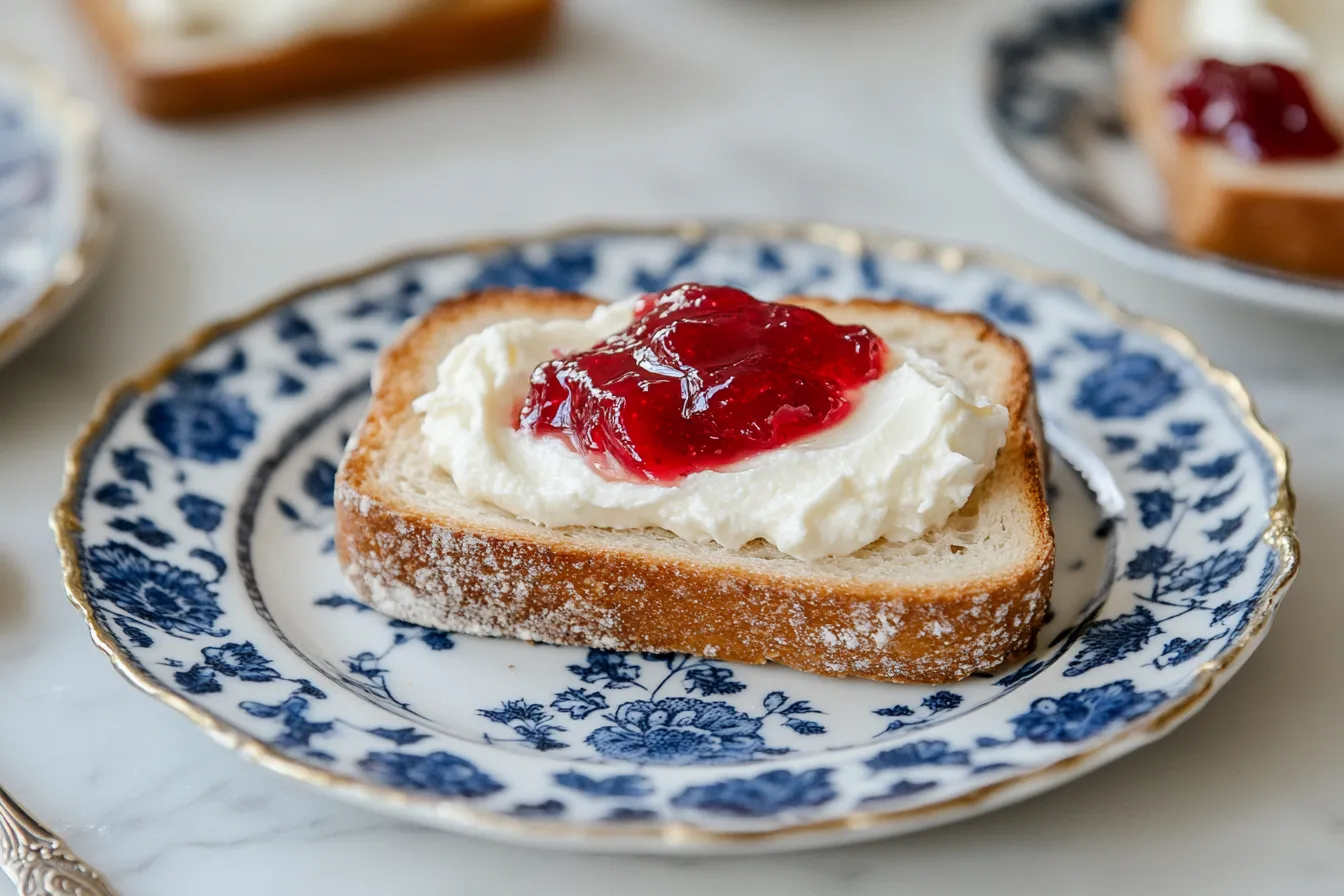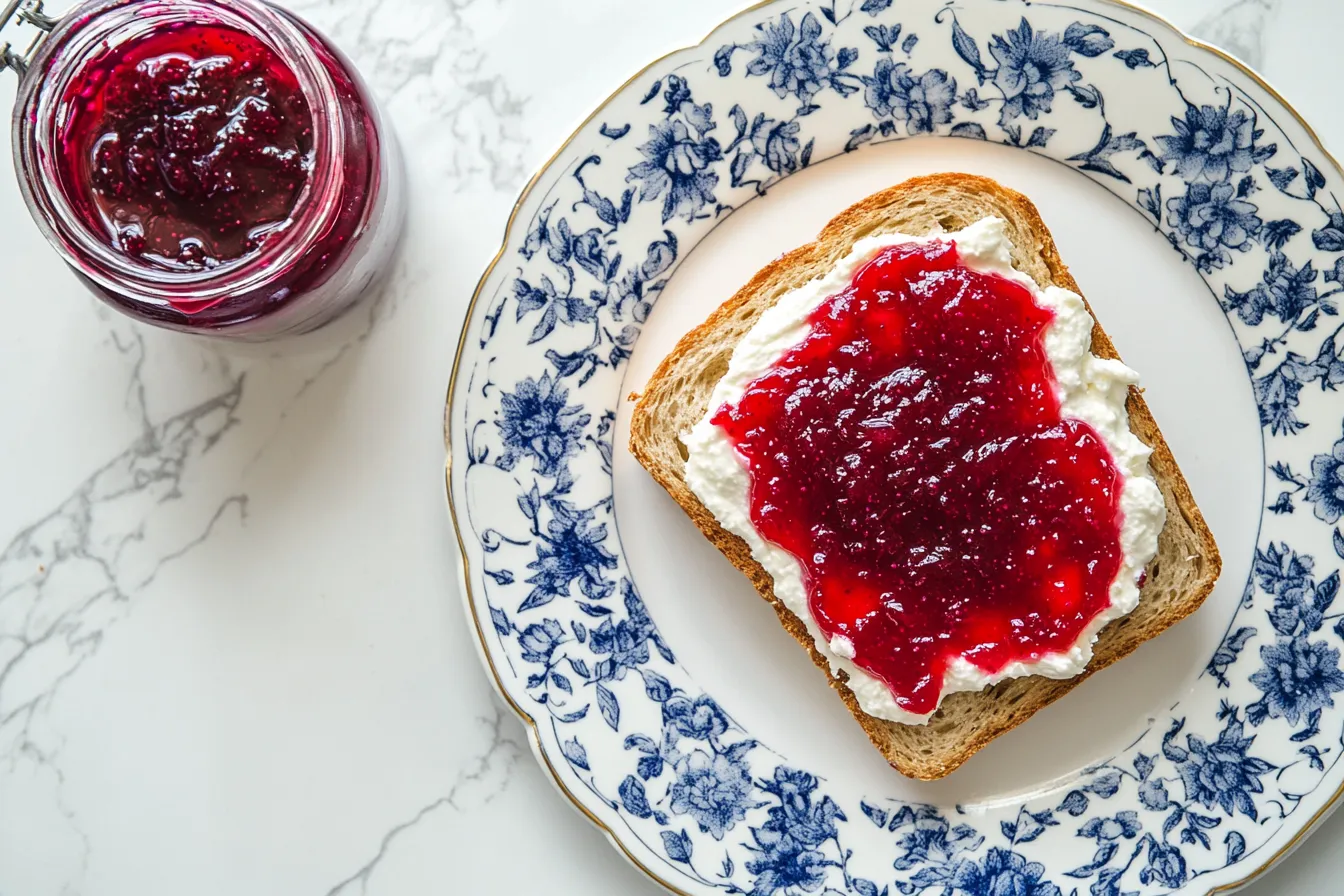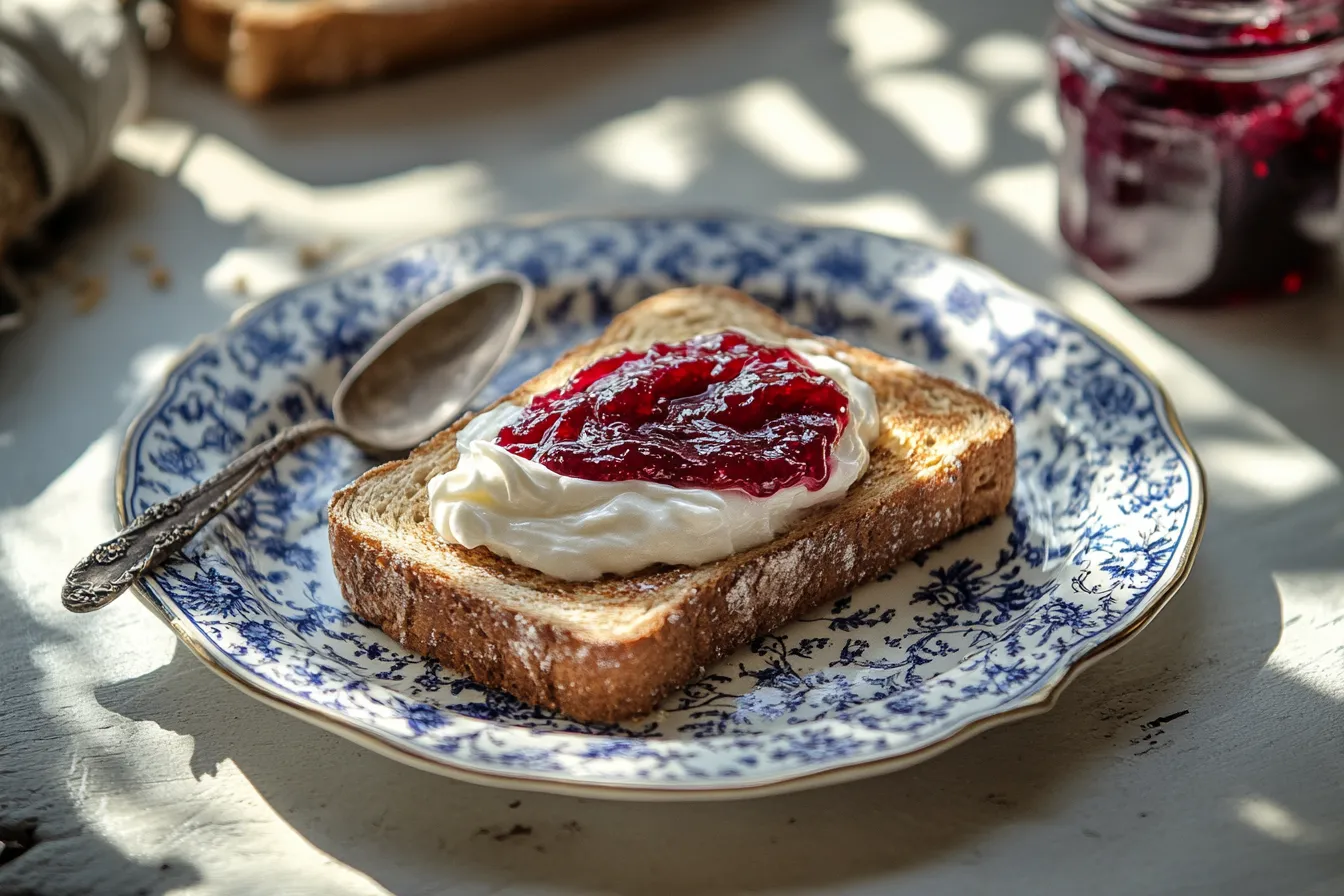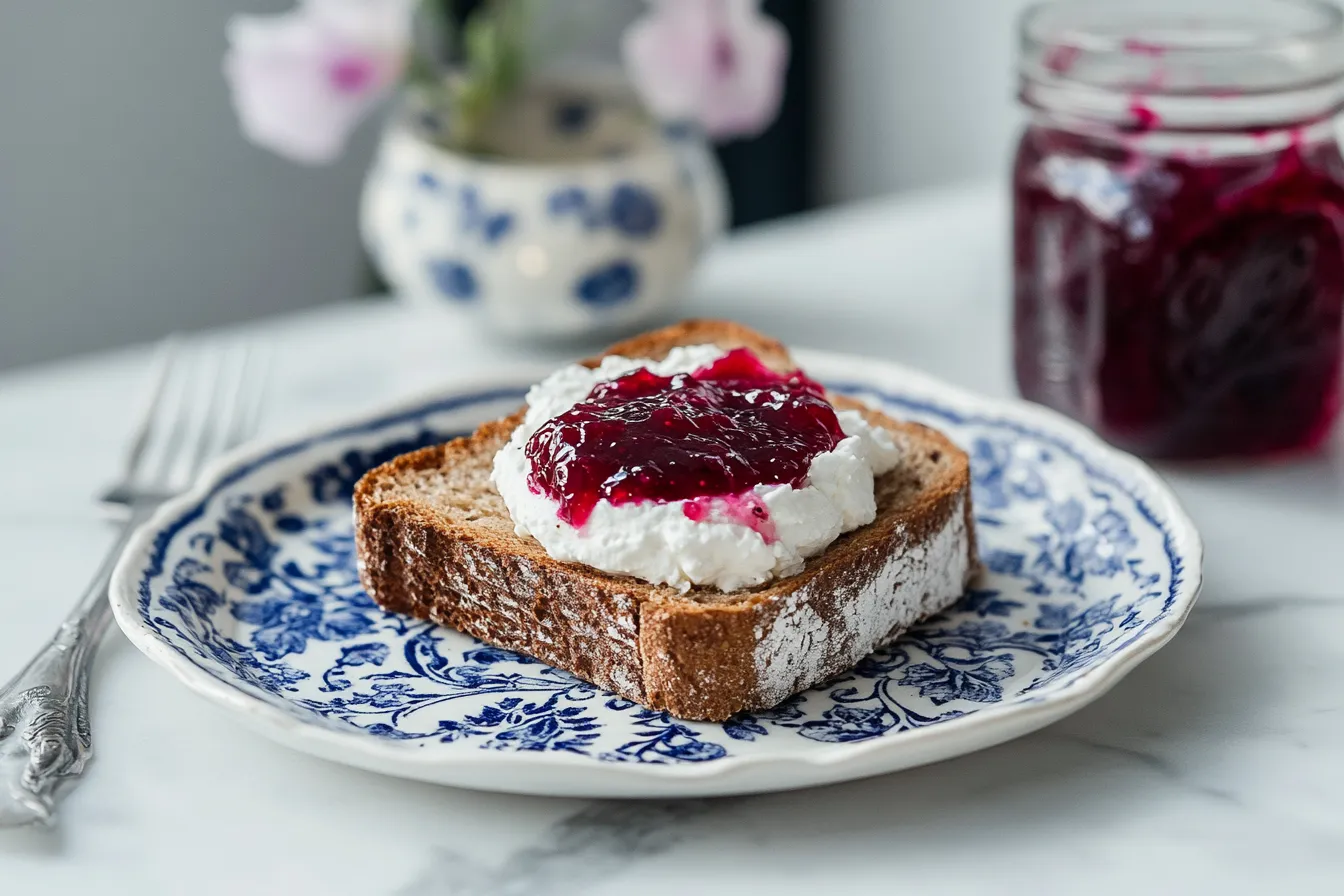 Pin
Pin
This beautiful raspberry rose jelly offers ultra-pure raspberry flavor with no seeds—perfect for those who love raspberries but could do without the texture interruption. The subtle addition of rose water enhances the raspberry's natural flavor, making it taste even more intensely like itself!
Last summer, I made a batch of this jelly and gifted small jars to friends. Three of them immediately requested the recipe! The vibrant color and pure flavor make it irresistible.
Essential Ingredients and Selection Tips
- Raspberries - Use the freshest, ripest berries for best flavor
- Rose Water - Just a touch enhances the berry flavor without tasting floral
- Lemon Juice - Provides natural pectin and balances sweetness
- Sugar - Creates the proper consistency and preserves the jelly
- Water - Just enough to help release the berry juices
The magic happens during the straining process, when the seeds and pulp are separated from the pure raspberry essence, resulting in a clear, intensely flavored jelly.
Detailed Cooking Instructions
- Step 1: Extract the Raspberry Juice
- Simmer raspberries with water until they break down completely. This initial cooking releases all the flavor and natural pectin from the berries. Stir constantly to prevent sticking and ensure even heat distribution.
- Step 2: Strain Thoroughly
- Line a fine-mesh sieve with several layers of dampened cheesecloth and pour the raspberry mixture through. This crucial step removes all seeds and pulp. Allow gravity to do most of the work—resist the urge to press or squeeze, which can make the jelly cloudy.
- Step 3: Strain Again for Clarity
- For the clearest jelly, strain the juice a second time through fresh cheesecloth. This extra step ensures your jelly will have that beautiful jewel-like transparency that makes it so visually appealing.
- Step 4: Cook with Sugar and Flavorings
- Return the strained juice to a clean pot and add sugar, lemon juice, and rose water. The precise proportion of these ingredients is key to proper setting and flavor balance. Bring to a boil and cook until the mixture reaches the jelling point.
- Step 5: Test for Doneness
- Use an instant-read thermometer to check when the jelly reaches 220°F, the temperature at which it will set. You can also perform the cold plate test by placing a small amount on a chilled plate—it should wrinkle when pushed with your finger.
- Step 6: Jar and Store
- Ladle into clean jars while hot and seal tightly. Store in the refrigerator for maximum freshness and the perfect soft-set consistency. The jelly will continue to set as it cools.

The Perfect Texture Balance
This recipe yields a softer set than commercial jellies, creating a luxurious mouthfeel that melts on your tongue. Unlike the stiff, bouncy texture of pectin-added jellies, this version spreads beautifully on warm toast without tearing it. The soft consistency also makes it perfect for swirling into yogurt or using as a sophisticated cake filling.
Beyond the Breakfast Table
While exceptional on toast with labneh or cream cheese, this versatile jelly shines in numerous applications. Warm it slightly to create an elegant dessert sauce for vanilla ice cream. Spoon a dollop onto a cheese board alongside aged cheddar. Mix a teaspoon into champagne for a raspberry rose bellini, or use it as the base for a sophisticated vinaigrette by whisking with olive oil and white wine vinegar.

Gift-Giving Perfection
Few homemade gifts rival the visual impact of raspberry rose jelly in faceted glass jars, where light catches the translucent ruby color. Package with a fresh loaf of artisanal bread and a container of labneh or cultured butter for a thoughtful hostess gift. Small jars make perfect wedding or shower favors with custom labels - the rose connection makes it particularly appropriate for romantic occasions.
Seasonal Adaptations
While summer's fresh-picked raspberries create the most vibrant flavor, this recipe works beautifully with frozen berries during winter months. The jelly-making process actually extracts maximum flavor from less-than-perfect berries, making it an excellent way to preserve end-of-season fruit that might be too soft for fresh eating but still bursting with flavor.
You Must Know
- Don't press the berries when straining or your jelly will be cloudy
- Double-straining creates the clearest, most beautiful result
- This jelly has a softer set than commercial varieties
- Refrigeration helps achieve the perfect consistency
- Wear an apron - raspberry splatter stains are notoriously persistent!
I learned the importance of patience during straining after my first attempt resulted in cloudy jelly with seed fragments. Now I let gravity do the work for the clearest, most seed-free result.
Chef's Essential Tips
- Dampen the cheesecloth before straining to prevent it from absorbing precious juice
- Use multiple layers of cheesecloth for the clearest jelly
- Clean the pot completely between cooking steps to prevent seeds in the final product
- Skim off foam for the most beautiful clarity
- Let jars cool completely before refrigerating

This Raspberry Rose Jelly has become my signature summer preserve. It captures the essence of raspberry season in its purest form, without a single seed to distract from the experience. The rose water addition is subtle but transformative - most people can't identify it specifically, but they always comment that the raspberry flavor seems more intense.
Final Tips
- Use within a year for best flavor, though refrigerated jars often last longer
- For longer shelf storage, process jars using proper canning techniques
- Smaller jars are perfect for gifts or sampling different serving ideas
- Save the strained pulp for smoothies or baking - no waste!
- Pair with a good crusty bread and labneh for a simple but extraordinary treat
Recipe FAQs
- → Do I need to add pectin?
- No, raspberries and lemon juice provide enough natural pectin.
- → Why not wash the raspberries?
- To preserve their full flavor and natural essence.
- → Do I need to process the jars?
- Not if storing in refrigerator, where they'll keep for months.
- → What if I don't have rose water?
- Can omit for plain raspberry jelly or substitute orange flower water.
- → How do I know when it's ready?
- When it reaches 220°F on a thermometer or passes the plate test.
